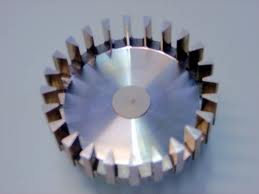Push Fit Rotors
Push Fit Rotors can be removed, cleaned and replaced without the use of tools.The push-fit rotor should be selected according to the properties of the sample, both feed size and the required grind fineness, and the subsequent analysis. Push Fit Rotors and ring sieves should be selected according to the properties of the sample, both feed size and the required grind fineness, and the subsequent analysis. The selection of the aperture size of the ring sieves depends on the required grind fineness and the sample. With most materials approx. 80% of the total sample achieves a fineness of less than half the aperture size of the ring sieve used.
Temperature-sensitive and brittle materials, such as powder coatings and resins, can be pulverized particularly well with the distance sieves specially designed for this purpose. Soft and elastic products, such as plastics, which normally cannot be processed at room temperature, can be fed into the mill after prior embrittlement with liquid nitrogen. By using the new ring sieves with slot openings, many plastics can now be reduced in size without any prior embrittlement.
For grinding small sample volumes, particularly in the pharmaceuticals sector, grinding tools for small volumes are available; these are made from corrosion-resistant steel 1.4404 (316). For heavy-metal-free size reduction of non-abrasive substances we recommend the use of rotors and ring sieves made from titanium together with cassette bases with a titanium-niobium coating and plastic cassette covers.
Common Applications
- Stainless steel
- Stainless steel with hard metal coating
- Titanium
- Steel 1.4404
Types and Applications
6-tooth
Coarse, bulky, fibrous materials such as animal feed pellets, hay and straw
12-tooth
Medium-coarse materials such as wheat, oats, corn, tablets and powder coatings
24-tooth
Fine materials such as chemicals, coal and sugar
